Plantar Fasciitis is a common cause or we can say it is the medical term for Heel Pain. Plantar fascia is a tight and thick tissue that connects the heel-bone to the toes. Plantar fasciitis occurs when the plantar fascia tissue becomes inflamed or causes itching, resulting in a sharp pain felt at the bottom of the heel. This can be caused by many factors like when carrying extra weight or when wearing bad quality footwears. Though plantar fasciitis treatments are usually quite simple, its pain can be fairly severe.
A common cause of heel pain is marked by inflammation in the band of tissue that connects the heel bone to the base of toes. This band is known as the Plantar Fascia. When left untreated, plantar fasciitis can become a chronic and serious condition and leave people more vulnerable to knee, hip, and back problems.
Common Symptoms
Symptom of plantar fasciitis is severe, feels like some stabbing pain in the heels, especially during the first few steps in the morning. Although pain tends to become less intense after those first few steps, it can still return after a long period of sitting.
The most common symptoms of plantar fasciitis are:
Sharp pain at the bottom of the foot or nearby areas around the heel.
Severe pain in the morning, especially while standing
Pain while prolonged weight bearing
Swelling and stiffness in the heels
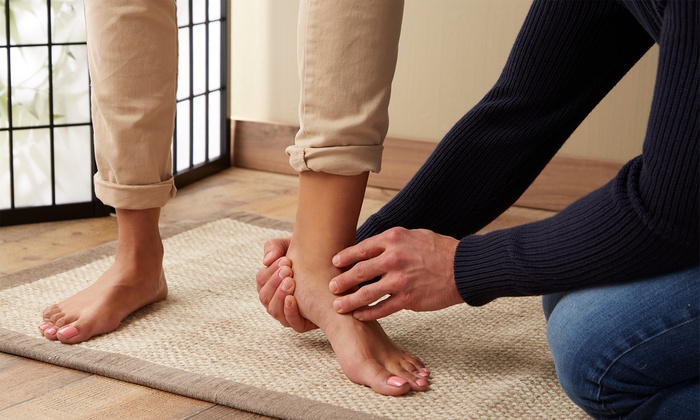
What causes Plantar Fasciitis to develop in the body
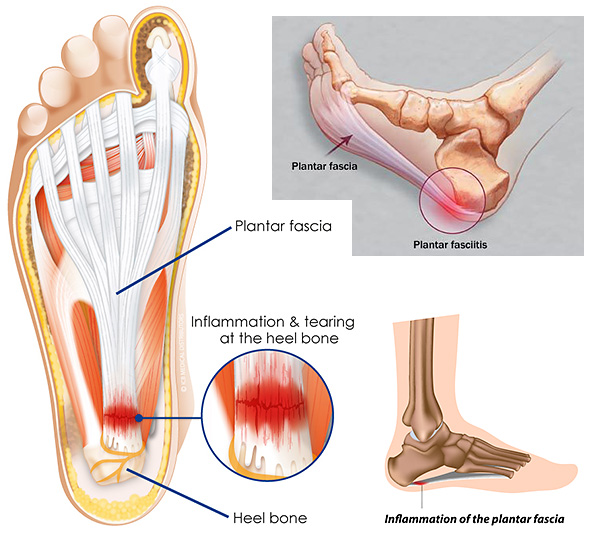
In a normal body, plantar fascia acts like a shock-absorbing bowstring that supports arch in the foot. If tension and stress on that bowstring become more, small tears can arise in the fascia. Repetitive stretching and tearing cause the fascia to become irritated or inflamed. It can also cause tenderness, pain, and swelling around the heel of the foot. If the condition is not managed on time, it can make day-to-day activities uncomfortable and difficult. Serious cases may even require heel surgery.
There are a number of factors that increase the risk for developing plantar fasciitis. These factors include:
Excessive exercise or Running especially in athletes
Sudden weight gain
More risk on overweight people
Prolonged standing
Tight calf muscles
Improper and bad quality footwear
Common in Flat footed people
Very high foot arches
Common ages between 40 to 60.
Menopausal Women
Plantar Fasciitis: Prevention and Treatment
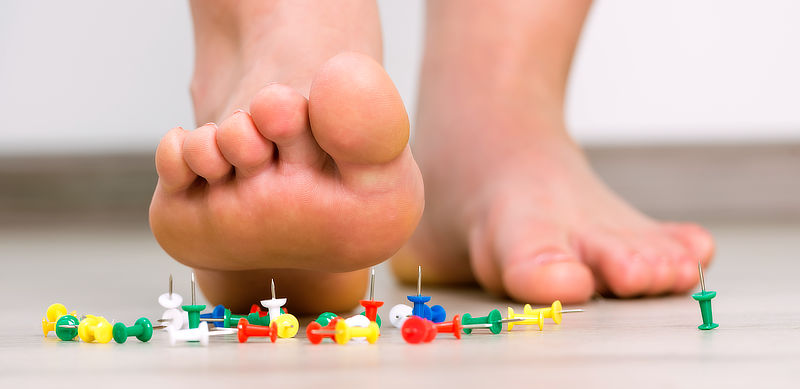
Undoubtedly, plantar fasciitis can be frustrating and painful problem to manage and their symptoms come back when they stop treatment. If home treatments and over-the-counter, anti-inflammatory drugs don’t ease the pain, steroid injections are weakening and rupturing the plantar fascia ligament, even surgeries are carrying risks of bleeding, infection, and reactions to anesthesia, now is the time to choose certain specific plantar fasciitis treatment to help prevent a recurrence of symptoms.
Electrotherapy, in this context, is indeed an effective way to heal plantar fasciitis. One important modality of Electrotherapy is Low Level Laser therapy (LLLT) or light therapy that conveniently and comfortable heal plantar fasciitis and all the pain associated to heels.
How Laser Therapy helps in treating Plantar Fasciitis
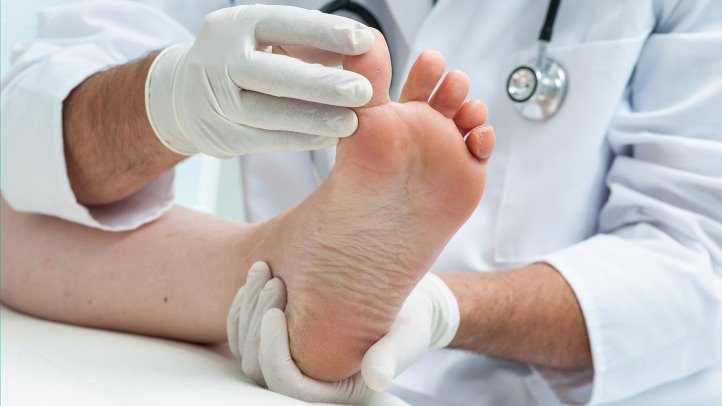
LLLT has a photochemical effect similar to photosynthesis in plants. Major mechanism of action occurs in the mitochondria. With the correct wavelength and density, light is delivered to the target tissues for an appropriate period of time (typically between 30 – 60 seconds). Pulses then improve tissue repair, anti-inflammatory effect and analgesia (pain relief) is best achieved with a continuous beam.
It is believed that Low Level Laser Therapy promotes wound healing by inducing the local release of cytokines, chemokines, and other biological response modifiers. This reduces the time required for wound closure and increases the mean breaking strength of the wound. LLLT increases the production and activity of fibroblasts and macrophages, improves mobility of leukocytes, promotes collagen formation and induces neo-vascularization. Once normal mitochondrial function is restored by LLLT, cell metabolism is improves gradually and the patient gets back in action quickly.
Safe, Effective and Non-Invasive Treatment
Laser therapy, in general, is safe, effective and non-invasive to use. Laser therapy can be of value in the mitigation and elimination of many painful conditions. Unlike surgical lasers, cold lasers do not heat up the body’s tissues. It can be easily applied to patients and has relatively short treatment time, depending on the power output of the device, the wavelengths used and the size of the area to be treated. It may harm your eyes if you look directly into the laser, so you are asked to use protective eyewear. But there are no known, permanent or serious side effects from laser therapy treatment.


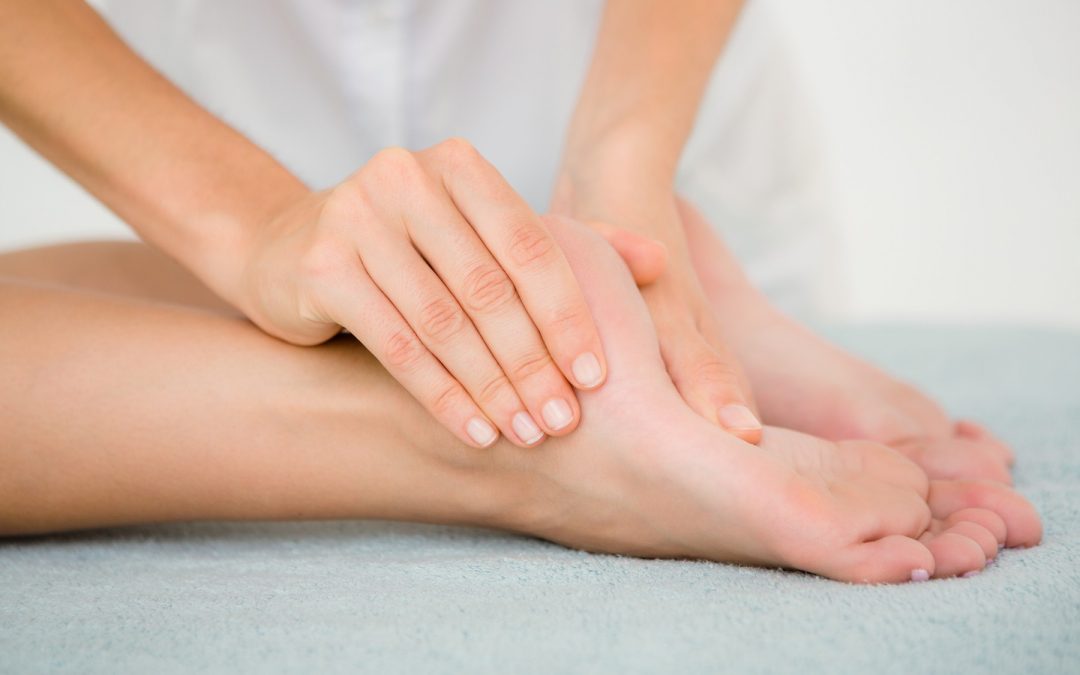
Nice but price high
Hello Ritesh,thanks for showing interest in our blog.
We have several devices with a variety of price range that can definitely fit to your requirements.
Allow us a moment to connect with you. 🙂